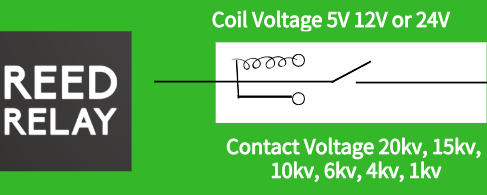Introduction to Reed Switches
A reed switch is an electrical switch operated by an applied magnetic field. It consists of a pair of contacts on ferromagnetic blades (reeds) enclosed within a sealed glass tube. The contacts may normally be open or closed, depending on the type of switch. When a magnetic field is present near the reed switch, the reeds become magnetized and attract each other, causing the contacts to close (or open, in the case of a normally closed switch). Once the magnetic field is removed, the reeds return to their original position due to the spring action of the metal.
Reed switches are known for their simplicity, reliability, and low cost, making them suitable for a wide range of applications. They can operate with very low currents and voltages, and they have a long operational life because there are no mechanical parts to wear out, aside from the reeds themselves.
Applications of Reed Switches
Security Systems
- Door and Window Sensors: Reed switches are commonly used in home security systems to detect when doors or windows are opened. A magnet is attached to the door or window frame, and the reed switch is mounted on the corresponding part of the door or window. When the door or window is opened, the magnetic field is removed, and the alarm is triggered.
Electronics and Appliances
- Flow Meters: In flow meters, reed switches can be used to count the number of rotations of a turbine or paddle wheel, which is proportional to the flow rate.
- Level Sensors: Reed switches can be used to detect the level of liquids in tanks or containers. A float with a magnet is placed on the surface of the liquid, and as the liquid level rises or falls, the reed switch detects the change and sends a signal.
Automotive Industry
- Speedometers and Tachometers: Reed switches can be used to measure the speed of a vehicle by counting the number of times a magnet passes the switch, which is typically mounted near a rotating component like a wheel or gear.
- Seat Belt Indicators: Reed switches can detect whether a seat belt is fastened by using a magnet embedded in the buckle. When the buckle is inserted into the latch, the reed switch closes, indicating that the seat belt is engaged.
Consumer Electronics
- Bike Computers: Similar to automotive applications, reed switches can be used in bike computers to measure speed and distance by counting wheel rotations.
- Refrigerators: Reed switches can be used to detect when the refrigerator door is open, helping to conserve energy by turning off internal lights when the door is closed.
Industrial Automation
- Proximity Sensors: Reed switches can act as non-contact proximity sensors in industrial settings, detecting the presence or absence of metallic objects without physical contact.
- Machine Safety: In machinery, reed switches can be used to ensure that guards or safety doors are properly closed before the machine can operate, enhancing worker safety.
Integration into Products
- Smart Home Devices: Smart locks, smart thermostats, and other IoT devices often use reed switches to detect the status of doors, windows, and other components.
- Wearable Technology: Fitness trackers and smartwatches can use reed switches to detect when a band is securely fastened around the wrist.
- Medical Devices: In medical equipment, reed switches can be used to monitor the position of moving parts or to detect the presence of medical supplies.
Conclusion
Reed switches are versatile components that find applications in a wide range of industries and products. Their ability to operate reliably in various environments and their low power consumption make them ideal for many different types of devices, from simple home security systems to complex industrial automation setups.
